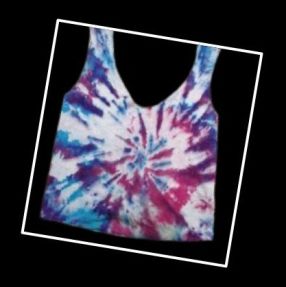Earth Day is right around the corner and if you’re in need of a lesson and activity around sustainability, then you definitely want to check out “Which Bag is Best?“. In this lesson, students explore various types of bags and then use their critical thinking skills and the decision making model to make an informed decision. Additionally, students will make an earth-friendly repurposed bag from a t-shirt in class that can be used for their gym clothes or shopping. Don’t have sewing machines? Don’t worry, I’ve got you covered!
Best?“. In this lesson, students explore various types of bags and then use their critical thinking skills and the decision making model to make an informed decision. Additionally, students will make an earth-friendly repurposed bag from a t-shirt in class that can be used for their gym clothes or shopping. Don’t have sewing machines? Don’t worry, I’ve got you covered!
Set
- If you have access to a variety of shopping bags made from a variety of materials like plastic, fabric, leather, paper, etc., display them so students can see each. If you don’t, you can just ask students for a list of different types of bags or put together a digital visual instead. Either way, ask students, “Which bag is best?”
- Explain to students that you are going to explore this topic further by working through The Shopping Bag Dilemma (see attachments), using the article titled, Plastic, Paper or Cotton: Which Bag is Best?
- After students work through the dilemma, you can take a poll to see which bag they thought was best before embarking on the bag project.
- Note: This entire lesson was inspired by the Ted Talk, “Which Bag Should You Use?” which I did not show to my students but wanted you to know about it.
Materials
- iPads or Laptops
- Projector & Screen
- Variety of Bags (optional)
- Old T-Shirts (bigger is better)
- Fabric Scissors & Pins
- Sewing Machines & Thread (optional)
- Tie Dye Supplies (optional)
Activities
- Begin with the bell ringer which prompts students to brainstorm things a t-shirt, that is no longer being worn, just hanging around the closet, could be transformed into that is useful and environmentally friendly. Whip around the room to share ideas. Hopefully, someone shares that it could be turned into a “bag” based on the assignment they just completed! If they don’t, this would be a perfect lead in to the project.
- Either provide students with a t-shirt to repurpose or ask them to provide their own. You might also canvas your staff for donations of t-shirts no longer worn or check the lost and found box (it’s amazing what you can find in there)! If you have to purchase, try second-hand thrift stores. My local store offers them for a quarter each when they’re on the clearance rack. Given the nature of the project, they may be willing to work with you and give you a deal!
- Once students have their t-shirts and you’ve decided whether you are going the SEW or NO-SEW route, you’re ready to begin. I encourage you watch the video of choice and then make your own sample ahead of time so you know how to guide your students. Both are easy to complete and would take no more than a couple of days to complete. If you’re lucky enough to have access to white t-shirts, you may want to add a session on tie-dying before you construct the bags. One year, the art teacher in my building had white t-shirts leftover from a project that she gave me to use with my class and we tie-dyed them first….outside as it was in the spring and warm.
- After completing the t-shirt bag, students were assigned a Sustainability Upcycled Shopping Bag PSA Project to complete for a specific target group. Target groups can be pre-assigned or randomly assigned…your call. Note: This is an optional project so, if you don’t have time to include, it’s not a big deal.
Attachments
- Shopping Bag Dilemma/Case Study
- Article in Google Doc Form
- Bell-Ringer
- Video for SEW T-Shirt Bag
- Video for NO SEW T-Shirt Bag
- Video for Tie-Dye T-Shirt Bag
- Sustainability Upcycled Shopping Bag PSA Project
Note: Please make a copy if you wish to use or edit any of the resources: Go to file, click “make a copy” and it’s yours.

